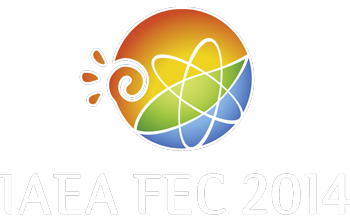Speaker
Prof.
William W. Heidbrink
(USA)
Description
The performance of the burning plasmas is limited by the confinement of superalfvenic fusion products, alpha particles, resonating with the Alfvénic eigenmodes (AEs). Two techniques are developed to evaluate the AE induced fast ion relaxation. Both rely on linear instability theory and are confirmed by experiments. The first is the reduced quasilinear technique or critical gradient model (CGM) where marginally unstable (or critical) gradient of fast ion pressure is due to unstable AEs. It allows the reconstruction of fast ion pressure profile and computed their losses. The second technique is called hybrid that is also based on NOVA-K linear stability computations of TAE (or RSAE) mode structures and growth rates. AE amplitudes are computed from the nonlinear theory perturbatively and used in the numerical runs. With the help of the guiding center code ORBIT the hybrid model relaxes the fast particle profiles. We apply these models for NSTX and DIII-D plasmas with the neutral beam injections for validations. Both methods are relatively fast ways to predict the fast ion profiles in burning plasmas and can be used for predictive modeling prior to building experimental devices such as ITER.
| Country or International Organisation | USA |
|---|---|
| Paper Number | TH/P1-2 |
Author
Dr
Nikolai Gorelenkov
(PPPL)
Co-authors
Mr
Jeff Lestz
(PPPL)
Dr
Mario Podesta
(PPPL)
Dr
Michael Van Zeeland
(General Atomics)
Dr
Roscoe White
(PPPL)
Prof.
William W. Heidbrink
(USA)

